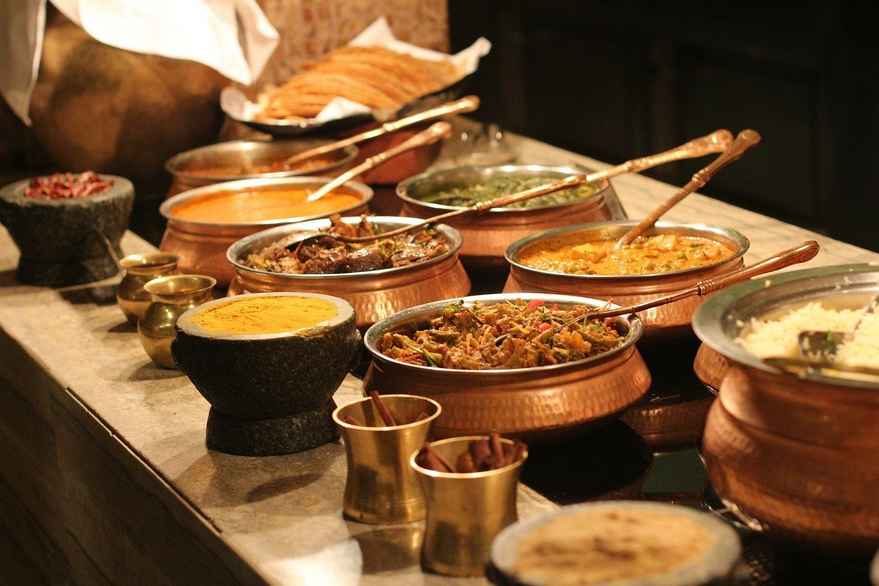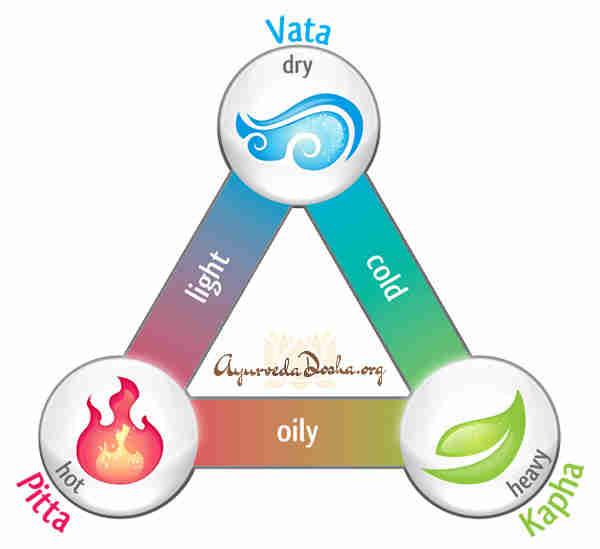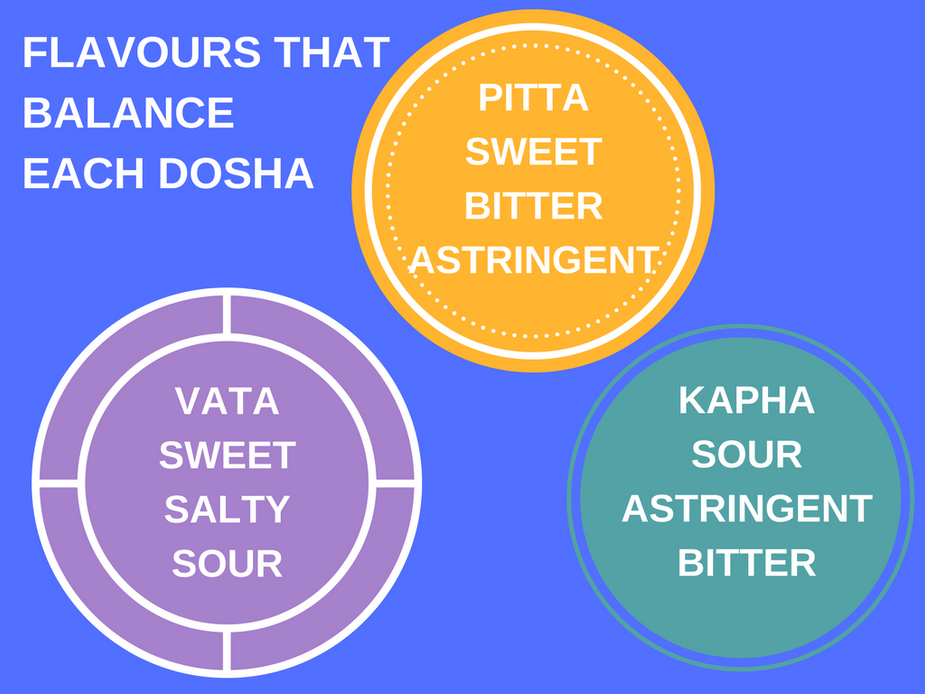FOOD ENERGETICS PART 2 - AYURVEDIC FOOD PHILOSOPHY

In the first of this 2 part article I shared a brief overview of some elements of the Taoist and Traditional Chinese Medicine (TCM) approach to dietary recommendations based on food energetics. Instead of viewing foods purely on their isolated nutrients like vitamins and minerals, they interpret and work with the overall energetic influence a particular food has on us. In this article I will discuss the Ayurvedic system of food energetics.
The ancient Indian health care system of Ayurveda also has its own unique way of integrating food energetics into dietary recommendations for an individual's unique constitution. Ayurveda like Taoism was developed over thousands of years and really encompasses a nature based approach to health that uses tools and gifts from the environment to help rebalance the body. However, unlike Taoists that kept written records of developing practices and healing concepts, the Ayurvedic system was an oral tradition for much of its development, handed down from teacher to student. As mentioned last time, these health care systems are very deep with much more detail than I can share in this article. The concept of different elemental energies that make up the universe that are in a continual dynamic flux is an interesting feature of the Ayurvedic system.
Our prakriti
When an Ayurvedic practitioners works with someone, one of the first things they will be assessing is what they call the clients 'dosha's'. One meaning of 'dosha' is 'that which goes out of balance'. There are three dosha's which describes someone energetic and physical make up or constitution. It's a similar concept to the four humours of Greek medicine. Our unique constitution or original source is known as our 'Prakriti'. We all have and need a mixture of each dosha within us. Their combination makes up our body and influences its metabolic activity. However, one or sometimes two doshas may be more prominant in an individual. For example, I am a Vata / Kapha type. When you are aware of your dosha's it can really help you maintain balance within your life because each dosha is either balanced, in excess or deficient. By understanding what increases or reduces a particular dosha, you can work with your own unique constitution to maintain optimal health. It is when our natural energetic foundation gets disturbed and is consistently too far out of balance, ill health arises.

source http://ayurvedadosha.org
The 3 Dosha's: Vata, Pitta, Kapha
Each dosha governs a different combination of elements, mental states and physical characteristics
Vata - Space and Air
Pitta- Fire and Water
Kapha- Earth and Water
Vata
The physical characteristics of a Vata dominant person.
Ectomorph: Thin, bony, tall, small eyes, angular joints
Qualities of Vata
Dry, light, cool, rough, mobile, subtle
Active mind, creative, quick thinking, spacey, fragile, nervous, anxious
Pitta
The physical characteristics of a Pitta dominant person.
Mesomorph: Muscular, atheletic, medium eyes,
Qualities of Pitta:
Oily, sharp, hot, light, liquid, acidic
Joy, intellect, passion, drive, will power, powerful, energy, anger, frustration
Kapha
The physical characteristics of a Kapha dominant person:
Endomorph: Round body shape, big eyes, big stable joints
Qualities of Kapha:
Moist, cold, dull, heavy, static, sticky
Love, patience, forgiveness, stability, calmness, greed, inertia, lethargy
Whats your Dosha type? Take the quiz and find out...
There are many online doshas quizzes available for you to take. They are a bit like a personality test that you can use to determine your predominating doshas.
Try this one! It may take 5 mins or so, but will provide lifestyle, dietary and herbal recommendations based on your doshas
Food energetics: Recommendations for each dosha
To balance each dosha type, dietary recommendations normally contain foods that have the opposite qualities to the dosha in question.
For instance, a Vata dominant type with qualities of cool, dry, rough and light are balanced by foods that are warm, smooth, oily, nourishing and grounding. This helps to bring down excess vata.
The Six Flavours
Last time, when we shared about TCM food energetics, we discussed the five flavours or tastes of food. Within the Ayurvedic system, they utilise a sixth taste, that being astringent. Each flavour either builds or reduces a particular dosha.
Vata
Vata dominant people do well to emphasise naturally sweet foods like root vegetables, many grains, ghee, nuts and some fruits. The sweet flavour is the most vata pacifying flavour.
Vata types also do best with salty and sour flavours.
Salt is very grounding for Vata and sour helps stimulate vata type digestion.
Vata's do best when they minimise excess pungent, bitter or astringent tastes.
Pitta
Pitta carries qualities of oily, light, hot, liquid so foods that are dry, cooling, grounding, and dense help to calm and cool down excess pitta.
Pitta dominant people do well to emphasize sweet, bitter and astringent flavours in their diet likes greens, bitter herbs, legumes with less oil. They also do the best on raw foods that are naturally cooling.
Pitta types do best when they minimise pungent foods like hot spices, sour foods like pickles and fermented foods as well as salty foods that all promote pitta in the body.
Kapha
Kapha carries the qualities of heavy, cool, oily, and smooth so foods that are light, warm, dry and rough help to balance the dominant kapha energy.
Kapha's do well do emphasise pungent, bitter and astringent flavours into their diet with spices, greens vegetables, legumes.
Kapha types do best with less sweet, salty and sour flavours that all increase the kapha imbalance.
See our resources section at the end of this article to read more about dietary recommendations for each dosha.

The Three Guna's:
Within the Ayurvedic system and Hindu traditions they describe 3 forces of the material world that permeate everything.
Sattva includes the qualities of truth, light, mind, consciousness, goodness, harmony, virtue and balance.
Rajas means agitation and turbulence and is associated with energy, life, stimulation, emotions, manifestation, assertion, dynamism, imbalance and change
Tamas refers to darkness is associated with matter, inertia, dullness, unconscious, resistance, entropy, and stability.
Almost every food we eat is said contains a mixture of at least 2 guna's. Pure sattvic foods are said to be pure organic dairy like ghee, honey, almonds and rice. In the table below are further examples of which types of food promote each guna.

The ayurvedic and yogic tradition encourages a predominantly sattvic diet that promotes peace of mind, inner growth and the evolution of consciousness. Too many rajastic foods are said to over stimulate the mind causing poor judgement and decision making. Excess stimulating foods may also lead to addictive behaviour or becoming overly attached to the material world so therefore hinders spiritual practice. However, rajastic foods used appropriately may be be a useful tool to support the body at a particular function like a herbal medicine or even culinary spices to increase digestive fire. Excess tamasic foods may lead to lethargy, depression, lack of lustre and stagnation of the spirit.
Mild culinary spices to improve digestive strength
- Cumin
- Cinnamon
- Coriander
- Basil
- Fennel seeds
- Mustard seeds
Hope you found this interesting, check out the resources below for more info and try out the dosha quiz linked above.
Quinn (2017)
Resources
Books
Prakriti- Robert Svoboda
The Ayurvedic Bible- Ann McIntyre
Ayurveda Wisdom- Cybele Tomlinson
The doshas
Vata recommendations
https://www.banyanbotanicals.com/info/ayurvedic-living/living-ayurveda/diet/vata-pacifying-diet/
Pitta recommendations
Kapha recommendations
https://www.banyanbotanicals.com/info/ayurvedic-living/living-ayurveda/diet/kapha-pacifying-diet/
The 3 Gunas

0 comments
Leave a comment
Please log in or register to post a comment